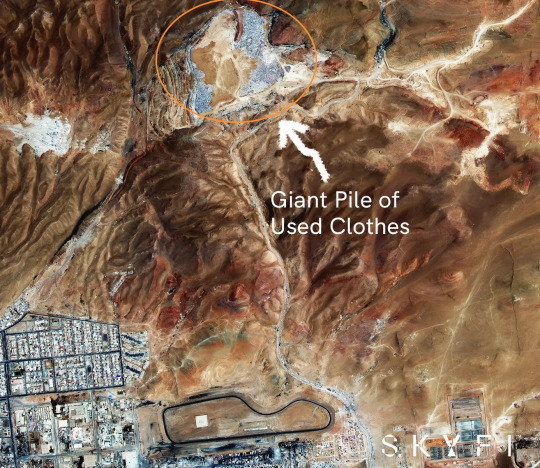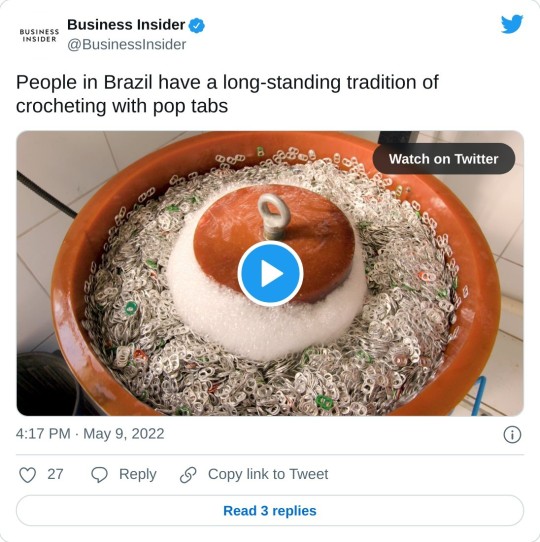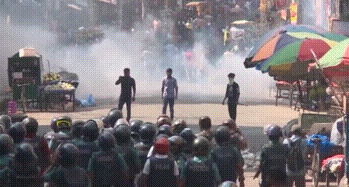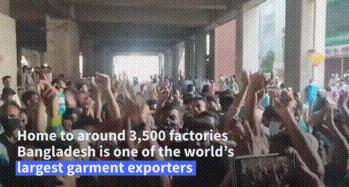#garment industry
Text

Chile’s Atacama Desert, the driest desert in the world, is turning into one giant landfill full of old, discarded clothes. More than 66,000 tons of clothes reside at the massive landfill which is now visible from space.
Only about 15% of the clothes coming to the landfill are second-hand, meaning 85% of the clothing being discarded has never been worn.
4 notes
·
View notes
Text
dreams sometimes dont come to life
A short essay on why Buddy Lewek's characterization was the worst thing to happen to me during all my time of loving Bendy and the Ink Machine.
My excitement for DTCL was a simmering, cautious hope.
A Jewish character? In a period right after WW2? Could there be, for once, proper religious representation in the media? My mind was full of ideas for how DTCL could approach his Yiddishkeit, how easy it would be for them! His name is Daniel? Have a cute little scene where he corrects someone’s pronunciation from DAN-iel to dah-NI-el. Negotiating to not work on Saturday, or feeling guilty or conflicted over it. Bringing home a nice tichel for his mother, who as a seamstress would appreciate fine fabric craftsmanship. Yiddish falling into conversation. A Rabbi mentor to show the difference between the two environments he was in. There were so many wonderful options, but I knew not to hope too hard.
Just like the JDS itself, it was too good to be true.
I had not read the book until today, because I had been gut punched by the information my friends had given me that there was hardly any mention of his Jewishness at all. The bite was worsened by it’s advertizing as a Jewish character. Which… barely.
The reality of the book hurt.
A lot.
So much so that it is what turned me away from the canon lore at all.
I could not even read it because I did not want my disappointment to be worse, as it already stung like a wasp had managed to get into my heart. So for three years, this has just been sitting on my mind. This little nagging feeling of loss. The loss of something I never should have even hoped for.
But hey, we all want to be represented.
It’s only so disappointing when it's simply a brownie card.
I will go in order of the book of how it is written, and only focus on the Jewish side of things, despite my qualms with the writing itself as well, and other historical inaccuracies, and of those there are many. Nor will I mention my personal opinions on ‘shoulds and woulds’ of the personality of a Yid. No matter how hard that is for my critical mind.
Right off the bat, we’re treated to the lovely Lower East Side! I have personal friends whose family is from that location during that time period, back when it was a whopping 70% Jewish population. Funnily enough, there is not a single reference to any synagogues or Yeshivot or klezmer bands or gemachs or… anything that was very prevalent in the area. In fact, it subtly pushes the whole concept of “Dirty Jew” in a way that tries to sugarcoat it with “look at how unfortunate Buddy’s situation is!” instead of the actual perceptions that have for so long followed the footsteps of almost any Jewish person. Antisemitism forced many Jews in the 1880s to move into slum like areas, and the entire conception had evolved from such a constricted environment. It is true that hygiene was an issue, however, when you take thousands of vastly poor, largely unsecularly educated, mass immigrants and try to cram them all in one place because no one could afford to travel- you get a lack of cleanliness. Such is life. The fact that the book does not touch on the reason aside from a causal reference that the people there were hard workers about a hundred pages later leans even heavier into that assumption.
Assuming that Mr. Schwartz was Jewish (or even not) the garment industry of the time would not have cared if a delivery boy would have quit. There was, again, a massive influx of fresh and desperate workers who would work for little wages and long hours. It bothered me because one is to assume Mr. Schwartz was Jewish due to the time period and how prevalent Jews are in the garment industry, especially historically. During this time period especially, Jewish disunion in said industry were at record highs, so one person quitting would mean nothing. There would always be another person to fill the gap… and likely at a lower wage.
Buddy’s knowledge of the war is also constantly shifting and disturbing in the way that it glosses over the Holocaust part of the Holocaust. He mentions that he knows about the War, hell, his father died in it, but he makes no reference to knowing why. In every single Jewish community, religious or otherwise, the Holocaust was a major issue. People excused FDR’s inaction due to the good he was giving to Jews already in America. Everyone knew about what was going on, even little kids. There is no reason he should be surprised about his Grandfather’s arrival. There is no reason that he would recognize his Grandfather’s accent, either, as there is no mention of anyone else with such an accent. As a child of immigrants, I cannot hear their accents, and that’s something I have noticed a lot of other first generation Americans do as well. So even if Buddy’s mother had a Polish accent, then it is still very unlikely that he would have recognized it. On the term of Grandfathers, how the hell does he not know the term Zeyde living in a community that, even today, dominantly speaks Yiddish? Especially considering the fact that Zeyde is a word that any schmuck off the street would know.
Let’s consider Buddy’s nickname now. As Dot mentions, yes, Danny (pronounced dah-NI) or Dan would be more likely. But it’s because he was a little helper! Surely nicknames like Buddy would suit that purpose well! If he had been purely Polish, then maybe. But because he is a Yid in the LES, that is a hard no. The nickname would have been Ah klineh Menchie. A mensch is a boy that is very well mannered and always looking to help. Menchie is a very common nickname for such a personality even today. Being called “Buddy” makes no sense in such a community.
The word “Jew” is not used in the book at all. There are only two uses of the word “Jewish”, all the way on page one hundred. Removing this from the book would have changed nothing. In fact, I would have found it a far more enjoyable read, reminding people that it was not just Jews who had been massacred and murdered in the camps. It would have gotten rid of the question.
The question.
That question.
“You’re Jewish, right?”
First and foremost, due to Buddy’s portrayal, Dot had absolutely no reason to assume that he was Jewish. Everyone knew that all those against the Nazis were put into the camps or simply murdered. This is what nailed the coffin shut for me. I wish they would have made him Polish, and Polish alone. I already knew what to expect thanks to my friend’s warning three years prior, but I still could not help but feel utter disappointment and hurt with Buddy’s defensive response. Defensive. This trait would not come up in Jews for many more years since the 1880s, all the way until the 1980s. As a frankly completely non Jewish boy who happens to have Jewish blood, he would have shrugged it off. Instead, the book uses both mentions of, not even Judaism, but Jewishness, to bring up antisemitism in a historically inaccurate and nauseating way. No Jewish pride. No casual agreement. Not even confusion before recognition. Defensive and angry.
Soul crushing. My disappointment is immense and my lack of surprise is larger.
Needless to say, my motivation to finish the book had been axed sharply, and the next chapter, chapter 10, was the last I managed to read with a critical eye, especially because it is the end of any possible hope. The rest of the book fails to have anything else historical or cultural of value.
Buddy displays no Yiddishkeit. He does not wear a kippah, he does not wear tzitzit, he does not even recognize Yiddish. No kosher, no Shabbat, no chagim or zmanim. Hell, he eats out with Mr. Drew at a restaurant, and even if the steak somehow had been kosher, he eats cheesecake directly after. Nebach. No hashkafa at all.
The end of the chapter is what turned off my brain, however.
Using the term ‘Never again’ with said not kosher food.
Well.
Do I even have to explain how belittling that is? Do I have to say why this leaves me numb? Do I have to continue reading with thought, only for more pain?
Dai li. Enough for me.
I finished the book. Of course I did. I haven’t left a book unfinished in years.
The rest I read hollowly. There was nothing for me in it. It had an okay story, fine plot points, and tied into the game. More or less. Mainly just used the names and slapped on a BatIM sticker.
Dreams come to life, sometimes.
Not this time, Control. Keep dreaming.
Thank you for reading this rant that has been on my chest for three years.
#bendy and the ink machine#batim#batim opinion#jewish characters#jewish thought#jewish media portrayal#buddy batim#buddy lewek#dreams come to life#dtcl#garment industry#yiddishkeit#historical fiction#historical research#antisemitism#brownie carding
76 notes
·
View notes
Text
https://shorabhossain.blogspot.com/2022/12/operation-breakdown-of-boys-rain-jacket.html
#industrial engineering#garment industry#apparel industry#garments factory#industrialengineering#garment factory in egypt#garmentfactory#merchandiser#tumblr milestone#garment factory
3 notes
·
View notes
Text

Great idea--even the store itself is eco-friendly!
2 notes
·
View notes
Text
Does pressing from an Industrial Vacuum Ironing Table give better results than a Normal Table?

Normal Table: A standard table in a home or small business usually has no ironing-specific features. It is used for everyday activities including eating, working, setting things down, etc.
Industrial Vacuum Ironing Table: An industrial vacuum ironing table has a sturdy ironing surface, an adjustable height, and suction. Laundry facilities, textile mills, and garment production units all frequently use it.
Read more at: https://www.welcogm.com/does-pressing-from-an-industrial-vacuum-ironing-table-give-better-results-than-a-normal-table.php
0 notes
Text
Your Window to the World of Textile and Clothing Industry
India's Leading B2B Publication and Online Portal serving the Textile, Apparel/Garment Industry with relevant news for more than 20 Years. - Clothing Industry
0 notes
Text
Bangladesh World’s Second Largest Textile Manufacturer
Current Scenario of Textile Exports in Bangladesh
The emerging garment manufacturing hub of the world, Bangladesh, is manufacturing 16% of the world's garment needs. In garment manufacturing, it stands second in the world after China, and it has surpassed the growth of the textile industry in India. In the year, this small country has exported garments worth $35.8 billion. In Bangladesh's textile industry, 61% of the exports are directed toward the European Union, and 21% of the total exports are directed toward the United States of America. Bangladesh's sole concentration right now is on the textile sector. As we can see 80% of the export comprises textile products.

Contribution of Bangladesh Textile Industry to Domestic Growth
The textile industry in Bangladesh is contributing a lot to the growth of this country. This sector appoints ten million people in Bangladesh out of the total population. The growth of Bangladesh's textile sector has also contributed to the growth of banking, transportation, ports, and other sectors. In South Asia, the highest number of factories is in Bangladesh, which has 4500 factories. The country, which is as big as Gujarat, has set a target of $100 billion worth of garment production by the year 2030. When we look back and calculate the time that it took to achieve $35 billion worth of exports, it just happened in 4 decades.
Apart from garment manufacturing, Bangladesh is also ahead in yarn manufacturing. Bangladesh is able to meet their 90% of the knitted yarn requirement and 40% of the woven yarn requirement. Out of the total GDP, the contribution of the textile sector is 13%, and the textile sector generates 75% of the employment in manufacturing. Today, garment manufacturing hubs in India, like t-shirt manufacturers in Tirupur, kurti manufacturers in Jaipur, saree manufacturers in Surat, and other garment manufacturing hubs, should take inspiration from Bangladesh.
#textile#manufacturing#textiles#clothing#dyeing#yarn#knitting#business#fiber art#pattern#exports#exporter#business news#import#textile industry#garment#garment industry#bangladesh#indian clothing#india#indian#indian government#textile crafts#asian#europe#usa
0 notes
Text
Garments Labels | Labels for Garments Industries
Prakash Labels, your one-stop-shop for all your labelling needs in the #garment industry! Our labels are designed to give your products a professional finish and help them stand out on the shelves.
Check out some of the benefits of choosing Prakash Labels for your garment labelling needs:
👉 Wide range of printed labels options.
👉 High-quality materials that are durable and long-lasting.
👉 Customizable designs to make your brand stand out.
👉 Quick turnaround times and competitive pricing.
Whether you're a small business or a large corporation, Prakash Labels can help you take your branding to the next level.
labels manufacturers in Noida
0 notes
Text
0 notes
Text
Fine Quality Gift Packaging Box
Looking for gift packaging boxes for your products?
We Papers Gallery PVT. LTD. Can provide you best quality custom packaging solution based on your requirement with custom inner protective foam based inserts.
For inquiry kindly visit at: www.papersgallery.com
email: [email protected]

#packaging#packaging boxes#branding#luxury#luxurypackaging#packaging printing#giftbox#gift#screen printing#rigid packaging#cardboard packaging#quality#cosmetic boxes#india#desingerpackaging#garment industry#usaproducts#printandpackaging#custom printed boxes
0 notes
Text
0 notes
Text


October 30, 2023 - Tens of thousands of striking garment workers took to the streets in Bangladesh, demanding fair wages. Many of the workers make clothes for big Western brands, but get paid only around 75 dollars a month. The unions are demanding a tripling of the wage. [video]/[video]
#bangladesh#strike#workers#industrial action#unions#working class#gif#2023#riot police#garment workers#police#tear gas
2K notes
·
View notes
Text
What machines are involved in a shoe washing machine business?

The shoe washing machine business is where various machines play crucial roles in ensuring that your dirty sneakers come out looking fresh and clean.
FIRST STEP: shoe cleaning is pre-treatment of shoes because Before shoes go into the washing machine, Shoes often come in very dirty, both on the outside and inside. With a pre-treatment, we can use a semi-automatic machine to clean them and get them 90% clean before the main wash.
Read more at: https://www.welcogm.com/what-machines-are-involved-in-a-shoe-washing-machine-business.php
0 notes
Text
Your Window to the World of Textile and Garment Industry
India's Leading B2B Publication and Online Portal serving the Textile, Apparel/Garment Industry with relevant news for more than 20 Years. - Garment Industry
0 notes
Text
Volatile History of The Bangladesh Textile Industry

The Dhaka Muslin
In this article you would learn about the history and current scenario of the 2nd largest textile manufacturer in the world which is Bangladesh. Let’s start with the history, Bangladesh is not a new player when we talk about textile industry. It has a long history of manufacturing textile items. When we talk about 1000 years back. Bangladesh textile industry used to manufacture a special fabric called Dhaka Muslin. The speciality of this fabric was that it was very thin, it was so thin that 50 meter long fabric could be stored in 1 matchbox. This fabric was the choice of the royal families. Even Napoleon's wife used to wear clothes made out of this fabric.
The Fall of Bangladesh Textile Industry
Bangladesh used to export cotton and silk between the 16th to 18th century. The countries to which exports were done were EU, Japan and Indonesia. It was an important place for the mughal emperor because of the exports. In 1757 britishers colonized Bangladesh which led to deindustrialization of textile industry. They used to import their product to Bangladesh and stopped exporting Bangladesh finished product to any country.
Situation of Bangladesh Textile Industry Post Independence
In Bangladesh there was major influence of west Pakistan post 1947, as they used to own major textile factories in Bangladesh till 1971. In the 1960s some native opened their textile factories. After the independence of Bangladesh there was an industrial enterprise order act passed by Sheikh Mujibur Rahaman. According to this act all the privately owned textile factories came under government control under the name Bangladesh Textile Mill Corporations.
These public owned factories were not performing well and after 1975 it started making losses, because of these losses the factories were given back to their prior owners in 1980. After that we have seen an upward direction of growth in the textile industry in Bangladesh. Today they have surpassed the growth of the textile industry in India. In today’s time many global buyers buy t-shirts in bulk, trousers, jeans, shirts and tops from Bangladesh.
#bangladesh#textile industry#textile#textiles#small business#business#entrepreneur#manufacturing#manufacturer#political#exports#exporter#apparel#garment#garment industry#clothing#clothes#dyeing#knitting#yarn#fiber art#pattern
0 notes